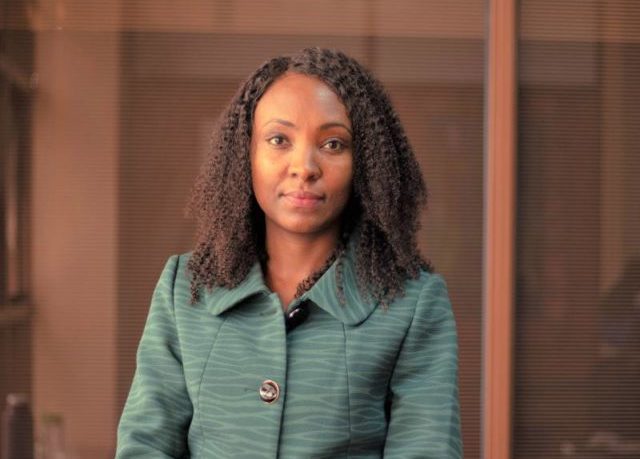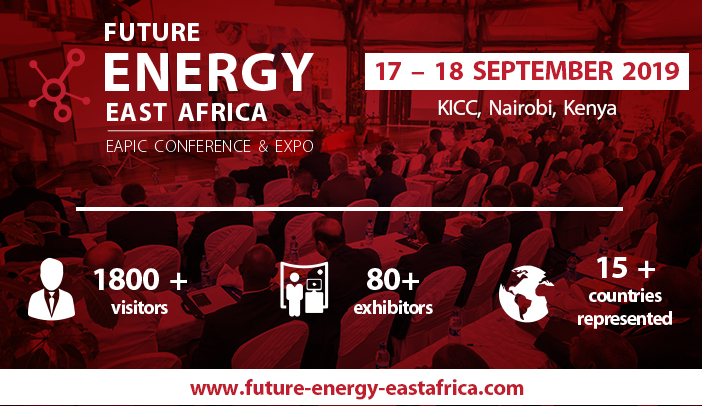Kenya’s renewable energy infrastructure requires huge and complex financing structures that put Joan Chahenza’s knack for negotiating and developing Power Purchase Agreements (PPAs) to the test. Describing herself as a renewable energy finance professional, she has contributed to structuring and tariff setting for projects totaling over US 1 billion.
This article first appeared in ESI Africa Issue 3-2019.
Read the full digimag here
Being KenGen’s Chief Financial Analyst & Technical Assistant to the Corporate & Regulatory Services Director holds immense responsibility. We caught up with Joan who has her finger on the pulse of the best financial models for different generation technologies.
Joan, tell us about a project that you are particularly proud of having worked on.
The project that stands out for me is the 158MW Olkaria V Geothermal Project. Being part of the negotiating team that delivered the PPA was such a privilege. This plant is a substantial resource located in the Kenya Rift valley, about 120km from Nairobi. The Japan International Cooperation Agency (JICA) are financing the project and construction commenced in January 2017 with the commissioning date set for late Q3 2019.
Ranked ninth in the world, KenGen is the largest geothermal producer in Africa, and Olkaria V is set to propel the country’s global geothermal ranking even higher. This project is also critical in ensuring Kenya achieves its goal of universal access to electricity by 2022 – which is as per the Kenya National Electrification Strategy, and is aligned to the SDG 7 of ensuring access to affordable, reliable, sustainable and modern energy for all. This is especially critical for the over 600 million people in sub-Saharan Africa who lack access to electricity.
Who are your mentors and how do you stay motivated?
For my personal growth, I seek out women who have long-standing careers and who are excelling in their spheres of influence to support me as mentors.
These women include registered architect Charity Wanjiku, the founder of Strauss Energy, who was a Forbes Top 50 Women in Tech in 2018.
Another is Beverly Simiyu-Nuthu, a seasoned leadership trainer and coach, and the CEO of B&G Consultants in Kenya. I also admire and draw inspiration from KenGen’s Managing Director and CEO, Rebecca Miano, who, as the company’s first female CEO, has broken through the glass ceiling.
To stay motivated, I read leadership books from a variety of authors such as Robin Sharma, Myles Munroe, and John Maxwell. The Bible has great lessons on leadership, building teams and emotional intelligence as well – which helps to drive my natural problem-solving nature.
How do you go about overcoming challenges in the work environment?
Love what you do! Every challenge is an opportunity for birthing something great. Having a strong support system of friends and family. Contacting your mentors during times of strain is also important in overcoming challenges faced at work. Every job has its level of pressure, so work smart and play hard; take on a hobby or exercise to relieve the stress.
Should gender matter? Are we asking the right questions and what energy sector changes are needed so that the issue of gender becomes irrelevant?
Yes, gender should matter. Research has shown that there is benefit in integrating gender considerations in energy utilities.
Harnessing women’s capabilities can also improve companies’ performance and efficiencies within the energy sector, which is predominately male-driven. The USAID Engendering Utilities programme, launched in 2015, has been successful in shaping this discussion.
In 2016, KenGen launched the Pink Energy Ladies forum, which has over 500 ladies. This forum is ongoing and encourages female participation in key activities in the company.
Pink Energy’s purpose is anchored around three pillars:
- Personal development and empowerment,
- Striving for a conducive working environment for ladies, and
- Promoting gender awareness at the workplace.
Tell us about the Kenyan energy sector landscape and key stakeholders in developing opportunities?
Kenya currently has an installed power capacity of 2,732MW with KenGen contributing 61% (1,630MW) and IPPs contributing the difference.
The Ministry of Energy (MoE) is responsible for policy and planning within the sector. Kenya Power and Lighting Company (KPLC) is the single offtaker for grid connected power with distribution and retail functions.
The Energy Regulatory Commission (ERC), now referred to as the Energy and Petroleum Regulatory Authority (EPRA), is the sector regulator.
Kenya Electricity Transmission Company (KETRACO) is in charge of high voltage transmission development for lines above 132kV. Kenya Electricity Generating Company (KenGen) is an entity that focuses on large power generation, while Rural Electrification and Renewable Energy Corporation (REREC) focuses on rural sector electrification.
Geothermal Development Company (GDC) oversees early geothermal steam development while the Nuclear Power and Energy Agency (NuPEA) develops framework and implementation of the national nuclear power development programme with a view to introducing nuclear power within the power subsector.
Other key electricity sector reforms and strategies include the Feed-in-Tariff policy (FiT 2008), Solar PV and Solar Thermal Regulations (2012), Energy Efficiency and Conservation Policy (Energy Management Regulations 2012), Universal Access of Electricity by 2020 and the FiT (2008, 2012) and Energy Act 2019.
The Energy Act 2019 replaces the Energy Regulatory Commission with the Energy and Petroleum Regulatory Authority (EPRA) which is the licensing authority for the generation, exportation, importation, transmission, distribution and retail supply of electricity within Kenya.
EPRA is also charged with designating the System Operator that will operate the national control centre and be responsible for matching consumer requirements. The act also creates the following new bodies, agency, and committees: i.e. Rural Electrification and Renewable Energy Corporation, Nuclear Power & Energy Agency, and Renewable Energy Resource Advisory Committee.
The new Energy Act 2019 provides for Open Access for the transmission and distribution systems, creation of consolidated fund and creation of the net metering regulatory framework, among others.
What are your top predictions (or wish list) for the energy market in the next five years?
- Significant strides to ensure realisation of SDG 7, universal access by 2030, and ensuring universal access to affordable, reliable and modern energy services.
- More cross-boarder trade in energy.
- Significant advancements in last mile connectivity to increase energy access in the East African energy market and sub-Saharan Africa as a whole.
- Private sector investment participation in transmission, which is usually a preserve of the national government. ESI
This Women in Energy feature is brought to you by Nyamezela.
Author: Nicolette Pombo-van Zyl
This article was originally published on ESI Africa and is republished with permission with minor editorial changes.
IPP tariffs and renewable energy projects will be a hot topics at Future Energy East Africa Conference and Expo taking place on the 17 – 18 September 2019 at the Kenya International Convention Centre in Nairobi. Register to attend here, it’s free.












